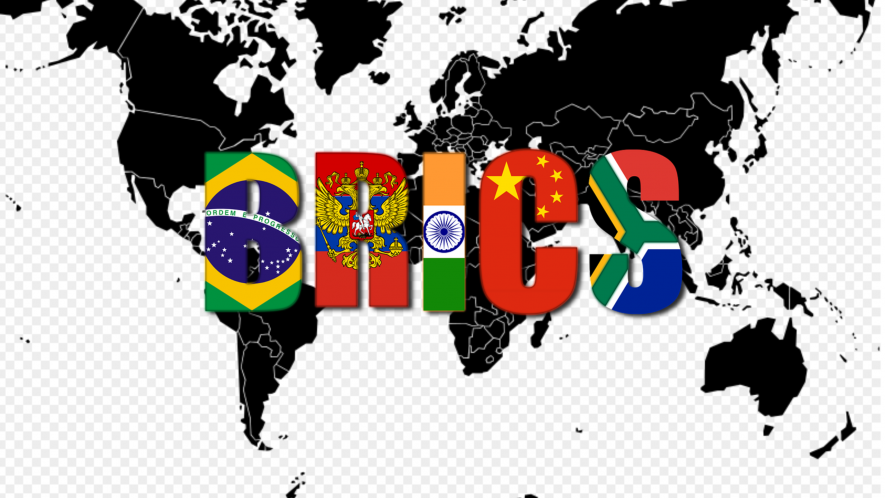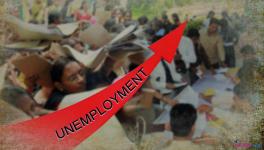World Economy Is Changing—People Know, but Their Leaders Don’t

The year 2020 marked parity between the total GDP (gross domestic product) of the G7 (the US plus allies) and the total GDP of the BRICS group (China plus allies). Since then, the BRICS economies grew faster than the G7 economies. Now a third of total world output comes from the BRICS countries while the G7 accounts for below 30%. Beyond the obvious symbolism, this difference entails real political, cultural, and economic consequences. Bringing Ukraine’s Zelenskyy to Hiroshima to address the G7 recently failed to distract the G7’s attention from the huge global issue: what is growing in the world economy vs. what is declining.
The evident failure of the economic sanctions war against Russia offers yet more evidence of the relative strength of the BRICS alliance. That alliance now can and does offer nations alternatives to accommodating the demands and pressures of the once-hegemonic G7. The latter’s efforts to isolate Russia seem to have boomeranged and exposed instead the relative isolation of the G7. Even France’s Macron wondered out loud whether France might be betting on the wrong horse in that G7 vs. BRICS economic race just under the surface of the Ukraine war. Perhaps earlier, less-developed precursors of that race influenced failed US land wars in Asia from Korea through Vietnam to Afghanistan and Iraq.
China increasingly competes openly with the United States and its international lending allies (the IMF and the World Bank) in development loans to the Global South. The G7 attack the Chinese, charging them with replicating the predatory lending for which G7 colonialism was and G7 neo-colonialism is justly infamous. The attacks have had little effect given the needs for such borrowing that drive the welcome offered to China’s loan policies. Time will tell whether shifting economic collaboration from the G7 to China leaves centuries of predatory lending behind. Meanwhile, the political and cultural changes accompanying China’s global economic activities are already evident: for example, African nations’ neutrality toward the Ukraine-Russia war despite G7 pressures.
De-dollarisation represents yet another dimension of the now rapid realignments in the world economy. Since 2000, the proportion of central banks’ currency reserves held in US dollars has fallen by half. That decline continues. Every week brings news of countries cutting trade and investment payments in US dollars in favour of payments in their own currencies or other currencies than the US dollar.
Saudi Arabia is closing down the petrodollar system that crucially supported the US dollar as the pre-eminent global currency. Reduced global reliance on the US dollar also reduces dollars available for loans to the US government to finance its borrowings. The long-term effects of that, especially as the US government runs immense budget deficits, will likely be significant.
China recently brokered the rapprochement between enemies Iran and Saudi Arabia. Pretending that such peace-making is insignificant represents purely wishful thinking. China can and will likely continue to make peace for two key reasons. First, it has resources (loans, trade deals, investments) to commit to sweeten accommodations between adversaries.
Second, China’s stunning growth over the last three decades was accomplished under and by means of a global regime mostly at peace. Wars then were mostly confined to specific, very poor Asian locations. Those wars minimally disrupted the world trade and capital flows that enriched China.
Neoliberal globalisation benefited China disproportionally. So, China and BRICS countries have replaced the United States as the champion of continuing a broadly defined global free trade and capital movements regime. Defusing conflicts, especially in the contentious Middle East, enables China to promote the peaceful world economy in which it prospered. In contrast, the economic nationalism (trade wars, tariff policies, targeted sanctions, etc.) pursued by Trump and Biden has struck China as a threat and a danger. In reaction, China has been able to mobilize many other nations to resist and oppose United States and G7 policies in various global forums.
The source of China’s remarkable economic growth—and the key to BRICS countries’ now successful challenge to the G7’s global economic dominance—has been its hybrid economic model. China broke from the Soviet model by not organising industry as primarily state-owned-and-operated enterprises. It broke from the US model by not organising industries as privately owned and operated enterprises. Instead, it organised a hybrid combining both state and private enterprises under the political supervision and ultimate control of the Chinese Communist Party.
This hybrid macroeconomic structure enabled China’s economic growth to outperform both the USSR and the United States. Both China’s private and state enterprises organize their workplaces—their production systems’ micro-level—into the employer-employee structures exemplified by both Soviet public and US private enterprises. China did not break from those microeconomic structures.
If we define capitalism precisely as that particular microeconomic structure (employer-employee, wage labour, etc.), we can differentiate it from the master-slave or lord-serf microeconomic structures of slave and feudal workplaces. Following that definition, what China constructed is a hybrid state-plus-private capitalism run by a communist party. It is a rather original and particular class structure designated by the nation’s self-description as “socialism with Chinese characteristics.” That class structure proved its superiority to both the USSR and the G7 in terms of its achieved rates of economic growth and independent technological development. China has become the first systemic and global competitor that the United States has had to face in the last century.
Lenin once referred to the early USSR as a “state capitalism” challenged by the task of making a further transition to post-capitalist socialism. Xi Jinping could refer to China today as a hybrid state-plus-private capitalism similarly challenged by the task of navigating its way forward to a genuinely post-capitalist socialism. That would involve and require a transition from the employer-employee workplace structure to the democratic alternative microeconomic structure: a workplace cooperative community or a workers’ self-directed enterprise. The USSR never made that transition. Two key questions follow for China: Can it? And will it?
The United States also faces two key questions. First, how much longer will most US leaders persist in denying its economic and global declines, acting as if the US position had not changed since the 1970s and 1980s? Second, how can such leaders’ behaviour be explained when large American majorities acknowledge those declines as ongoing long-term trends?
A Pew Research Center random poll taken among Americans between March 27 and April 2, 2023, asked what they expected the situation of the United States to be in 2050 compared with today. Some 66% expect the US economy will be weaker. Seventy-one percent expect the United States will be less important in the world. Seventy-seven percent expect the United States will be more politically divided. Eighty-one percent expect the gap between rich and poor will grow. The people clearly sense what their leaders desperately deny. That difference haunts US politics.
Richard D. Wolff is professor of economics emeritus at the University of Massachusetts, Amherst, and a visiting professor in the Graduate Program in International Affairs of the New School University, in New York.
Source: Independent Media Institute
Credit Line: This article was produced by Economy for All, a project of the Independent Media Institute.
Get the latest reports & analysis with people's perspective on Protests, movements & deep analytical videos, discussions of the current affairs in your Telegram app. Subscribe to NewsClick's Telegram channel & get Real-Time updates on stories, as they get published on our website.
























